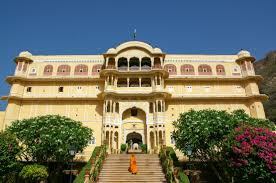India is a blend of diverse culture and tradition. The people of this country have the capability of embracing different cultures and giving it a unique twist. The festival of Christmas is one such example. Christmas in India has a distinct flavour that paints a vivid picture of the community life in India. Want to learn more about this uniqueness? Here, we have compiled a list of ten Christmas related facts from India for you:
1. Christmas was introduced in India by the Britons.
2. Similar to the Western world, preparations for the Christmas week starts from the Advent Sunday. The Churches start planning for the midnight mass and other festivities. The families too start their preparations for Christmas.
3. Christmas is quite colourful in India. You’ll find the houses, streets and shops draped in the colours of Christmas.No Indian festival is complete without lights. During Christmas, you’ll find the Churches and the houses decorated with stunning lights.
4. Similar to other festivals in India, food and sweet delicacies are an integral part of Christmas celebration. Along with the traditional fruit cake, people prepare
5. The Bow Barracks in Kolkata, is famous for its Christmas festivities.
These barracks were built during the World War I and were used by the British troops during the war. When they left India, these barracks served as a residence for the Anglo-Indian community in Kolkata. People from all over Kolkata come and join the Anglo-Indian community to celebrate Christmas.
- Kidiyo or Kulkul (deep fried sweet dough balls),
- Neureos (Coconut stuffed fried dumplings) and
- crispy banana chips.
These sweets mainly originated from Goa and then adopted by the rest of the countries.
These barracks were built during the World War I and were used by the British troops during the war. When they left India, these barracks served as a residence for the Anglo-Indian community in Kolkata. People from all over Kolkata come and join the Anglo-Indian community to celebrate Christmas.
6. In many parts of India, people decorate Banana or Mango tree instead of the traditional Christmas tree.
Image courtesy:
In Western Countries, coniferous trees such as fir, spruce or pine is used for decoration. However, these trees are not available in many parts of India.
Image courtesy:
In Western Countries, coniferous trees such as fir, spruce or pine is used for decoration. However, these trees are not available in many parts of India.
7. In Southern India, Christians decorate their homes with clay lamps. This custom has a strong resemblance to the Hindu custom of lighting lamps during Diwali.
8. In North-West India, the Bhil tribe has their unique way of celebrating Christmas. During the Christmas week, they take out processions every night and sing their own version of the Christmas Carol.
9. People in India do not exchange Christmas gifts. Instead, they treat friends and family with boxes of plum or fruit cake.
10.During Christmas, Windamere Hotel- a Colonial Hotel of India organises colourful Christmas week from 20th December to January 1st. They invite globally acclaimed musicians to perform and entertain the guests.















